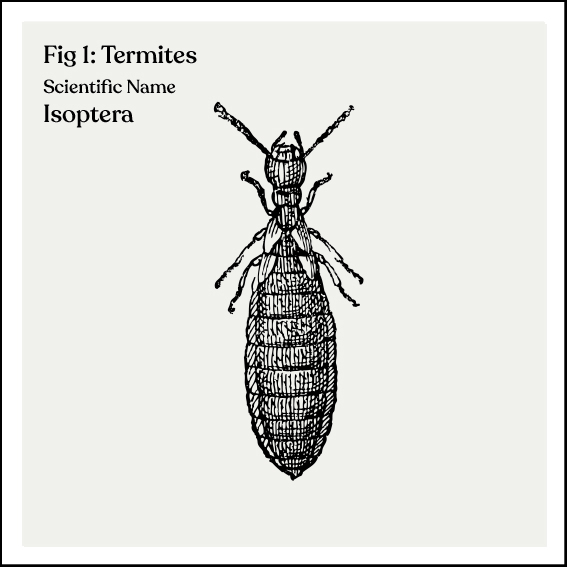With 1 in 3 Australian homes having termites within property boundaries, it comes with little surprise that termites are one of the most destructive pests in Australia. If left untreated, damage caused by termites can cause serious, sometimes irreversible damage to your property.
If you think you might have termites, it’s important that you act fast. And, with there being more than 20 species of termites that are able to chew through solid wood, it’s worth knowing the signs of an infestation before it spreads too far.
Here are five warning signs to keep an eye out for both in and around your house that will help you in identifying an infestation and avoid termites in your home.

Mudding or Mud Tubes
Often referred to as ‘mudding’, common termite mud workings look like mini tubes and are often made of dirt or termite droppings. Despite being quite difficult to see from the outside, mud tubes are one of the most common warning signs of a termite infestation. If you see any tubing in a piece of broken timber near or in your house, it’s a pretty sure sign that termites have set up camp in your home.
Unfortunately, if you do spot any mudding, it’s too late to proactively combat termites. However, you can prevent termite travel across your property by avoiding build-ups of moist soil or dirt around the perimeter of your house.
Tight Fitting Doors and Windows
While stiff windows and warped doors are often related to dampness and hot weather, they can also be a sign of termite infestation.
Termites produce moisture when they’re eating and tunnelling through doors and window frames. This causes the wood to warp, making it hard to open and close doors and windows.
Discarded Wings
Usually, one of the first signs of termites in your home is the presence of flying termites, known as swarmers or alates. The flying termites (most typically spotted during Spring and Summer) are male and female termites that have left the nest in search of a mate to establish a new colony.
After finding a mate, the flying termites will lose their wings and crawl to a suitable nesting site where they seal themselves up to mate and start their new colony.
Often, flying termites will reproduce in rotting tree stumps or large piles of wood. Therefore, clearing up any excess wood from around your house is good practice for preventing termite nesting on your property.
Clicking Noises in the Walls
One sign of termite infestation is the sound of quiet clicking or scratching coming from inside your walls. In order to signal a disturbance or danger to other termites, soldier termites will bang their heads against wood or shake their bodies.
Worker termites (the termites that eat the wood) tend to be quite noisy as well. In fact, if you put your ear close to infested wood, you can hear the termites munching away.
Damaged Paint or Plaster
Often resembling minor water damage, termite damage to walls is actually a serious and complicated issue to fix. The damage often gives wall paint a bubbling effect, which comes as the result of termites eating away at the timber in the internal walls. This then affects the wall integrity and causes paint or plaster to crack.
If you notice bubbling or honeycomb effects on your walls, it’s too late to take preventative measures and a professional pest control team will need to manage the problem.
While there are preventative measures you can take to deter termites in your home, termite infestation is serious and should be handled by professional pest controllers. If any of these warning signs sound familiar, get in touch with us today and book in a FedPest Termite Inspection – you’ll be glad it’s sorted!



